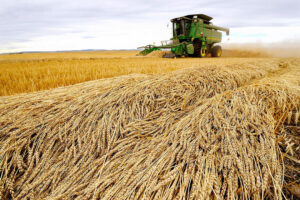By Vonn Andrei E. Villamiel
CANADA is seeking to expand its footprint in Philippine agriculture following the success of some of its collaborations in the Philippine hog and dairy industries, a Canadian government official said.
Diedrah Kelly, executive director of Canada’s Indo-Pacific Agriculture and Agri-Food Office, said at a food security forum late Monday that the use of Canadian technology in some Philippine farms has yielded efficiency and productivity gains.
“As a result of this technology, the yield on those cows is about a liter more (of milk) each day than what they had previously,” Ms. Kelly said.
“Canadian technology and genetic material are being provided for both pork and dairy,” she added.
The technology-sharing supports the Philippines’ drive to expand its dairy industry. The Department of Agriculture (DA) said it set a target of 5% of the Philippines’ dairy requirements to be serviced by domestic production within the next two or three years.
The Philippines currently imports about 99% of its dairy needs from Australia, New Zealand, and Canada.
Canadian Ambassador to the Philippines David Hartman said at the forum that Canada is working more closely with the Philippines to strengthen food security and support sustainable growth through stronger agricultural and trade ties.
“Food security is not just about access to food. It is about continual access to high-quality and safe food, which itself depends on the resilience of our supply chains, the sustainability of our agricultural systems and robust trading relationships,” Mr. Hartman said.
Mr. Hartman said Canada is a reliable supplier of agricultural products to the Philippines, exporting meat, grains, seafood and processed foods, while also providing expertise in climate-smart technologies, precision farming and sustainable practices.
Ms. Kelly added that Philippine experts and officials have visited Canada to observe its biosecurity practices to contain African Swine Fever (ASF) and other diseases.
According to the DA data, since ASF was first detected in the Philippines, the hog herd has fallen from 15 million head to around 8 million.
Ms. Kelly also cited the potential of plant-based proteins in addressing stunting in children, particularly the use of ingredients like peas and chickpeas, which are imported by the Philippines primarily for feed production.
“Canada produces a significant amount of peas and chickpeas, which have high levels of protein. They are very cheap, and there is the technology for pea protein extraction that can be used for the fortification of staples like noodles and rice. It is an area that Canada and the Philippines should explore more,” she said.
Canadian officials at the forum said collaboration and trade efforts between the two countries reflect the complementary nature of their agricultural industries.
In 2023, Canada was the Philippines’ 10th largest supplier of agri-food and seafood products, with imports amounting to around $460 million, according to Canada’s Agriculture department.
Top Canadian exports included frozen pork, which accounts for roughly 25% of Philippine pork imports. Canadian wheat and meslin, a mix of grains used in animal feed, also accounted for 9.2% of Philippine imports of such commodities.
The Philippines exports various high-value crops and fish products to Canada. According to the DA, agri-fishery exports to Canada grew from $109 million in 2020 to $148 million in 2024, the strongest performance in five years.
The trade deficit in agri-food and fishery commodities remains around $340 million in Canada’s favor, according to 2023 data.
“While Canada does import fruits and vegetables from the Philippines, there is simply space to do more,” Ms. Kelly said.
At the forum, Arnel V. de Mesa, agriculture assistant secretary for special concerns and official development assistance (ODA), said the Philippines is looking to boost production and exports of high-value agricultural commodities.
“Rice is an important staple, but to make farmers profitable and bring them out of poverty, we should go beyond rice. The department has recognized the importance of high-value commercial crops,” Mr. De Mesa said.
Mr. De Mesa said the DA is focusing on boosting the production of coffee and cacao and is looking to Canada for support.
“Canada has very good innovation and technology that the Philippines can tap. By the end of December, we will be proposing several ODA projects focusing on coffee, cacao, and dairy … We are hoping that Canada and the Philippines can work together to help us bridge all those issues,” Mr. De Mesa said.
Mr. De Mesa said Canadian expertise could also be tapped for post-harvest facilities. He noted that post-harvest losses to the mango crop are around 37%, while losses to rice were 17%, much higher than Vietnam’s 8%.
Recently, the Canadian Embassy in Manila announced 12 new development projects in the Philippines worth more than P3.2 billion, covering agri-food trade, climate-resilient and adaptive food systems, water and food security, among others.
Canadian efforts in the Philippines are part of a broader pivot to Southeast Asia, amid uncertainties in North American trade.
Canada is currently negotiating a free trade agreement with the Association of Southeast Asian Nations to deepen trade and investment ties.

